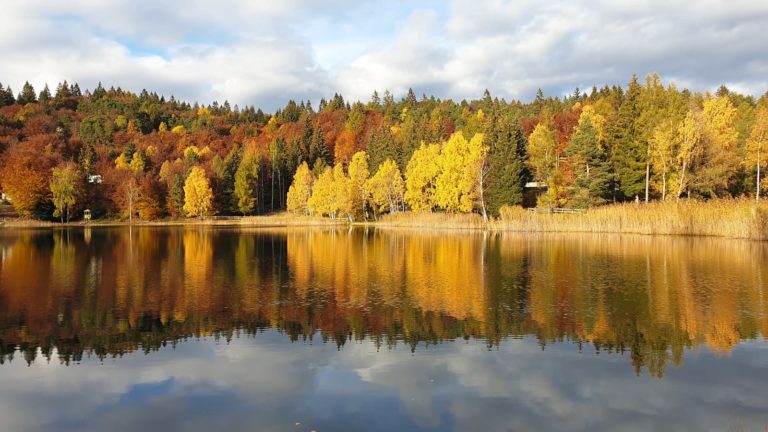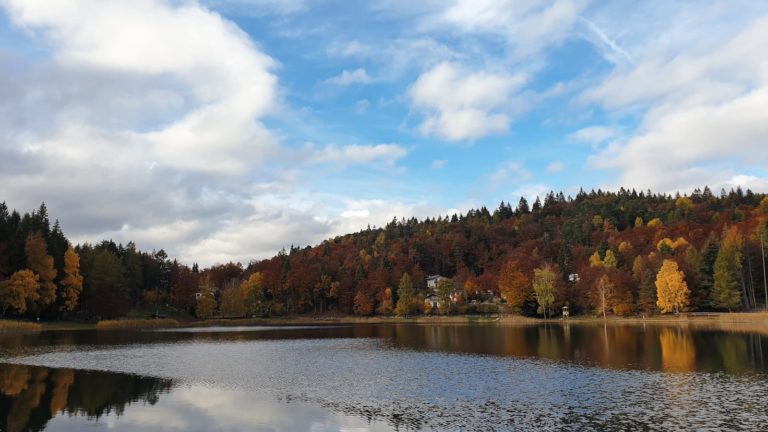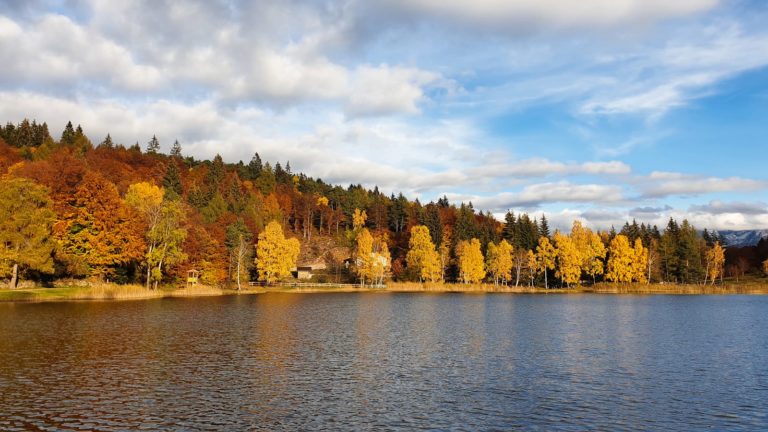Located in Val di Cembra, 5 kilometers from the village of Cembra, Lake Santo is an enchanting mirror lake at about 1,200 meters above sea level.

Its ancient formation is linked to the glaciation periods when immense tongues of ice shaped most of the Trento province territory. This geological area has porphyry as the prevalent rock type. The ancient glaciers gave this basin its current formation. Then, it was occupied by water, which takes on a particular transparency, thanks to the porphyry rock. Its particular name derives from an ancient popular legend. Why is it called Lake Santo (Holy Lake)? To learn about the ancient legend and other curiosities, don’t miss this post.

Tridentine sagas and legends: origin of Lake Santo in popular tradition
As you can easily imagine, a picturesque lake always gives rise to sagas, legends, stories and myths that have origins in the mists of time. The legend of Lake Santo tells that once upon a time, in the very place where the lake is located, there was a land subject to bitter quarrels between the heirs. At a certain point, one of them, who was taken by exasperation, wished it would become a mountain lake instead of beautiful fields. Suddenly the water began to gush copiously from the subsoil, even threatening the nearby village of Cembra. The frightened and worried inhabitants went in a procession to the lake. The parish priest, with the aim of blocking the outflow of water, threw in the ring of the Saint Mary. The water stopped, and since that day, tradition has it that the lake has become “Holy”.
Tips and Tricks: Alfred Dürer along the Val di Cembra
In the fifteenth century, a young German artist, Alfred Dürer was entranced by the beautiful Alpine landscapes during his first Italian trip. Around 1405, one of the subjects of his watercolors became Lake Santo. He had recently left Nuremberg and his wife for the call of the beauty of Italy and in search of traces of distant antiquity. He was traveling in the wake of a group of merchants who were used to walking along safe and well-worn roads. He had crossed the Brenner Pass, and at Egna, he had to take an alternative route that ran through the Cembra Valley, due to an overflow of the Adige River. It was an opportunity to visit Segonzano and the famous pyramids. Today, we can still admire Lake Santo and the warm soft colors of the valley that gave birth to Dürer’s beautiful watercolors.
The beautiful pond is an excellent starting point for hikes along the Dürerweg and European Path E5.

How to get to Lake Santo BY CAR
Departure: Rovereto
Arrival: Holy Lake
Parking: Free just before the pond
Length: 55 km
Journey time: 50 minutes
Did you already know the evocative Lake Santo?
CLICK HERE to set your navigator on Maps and arrive directly at the Lake Santo